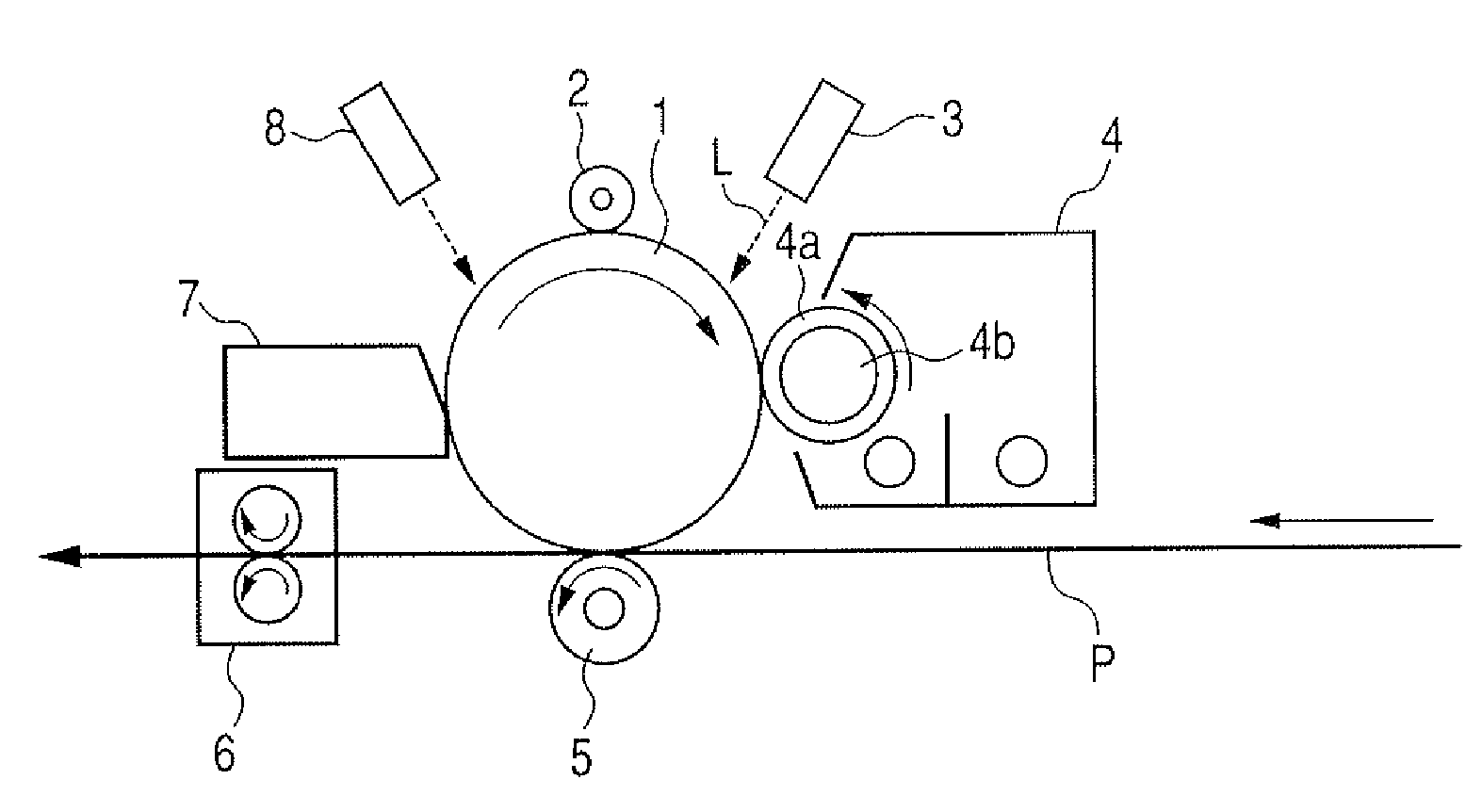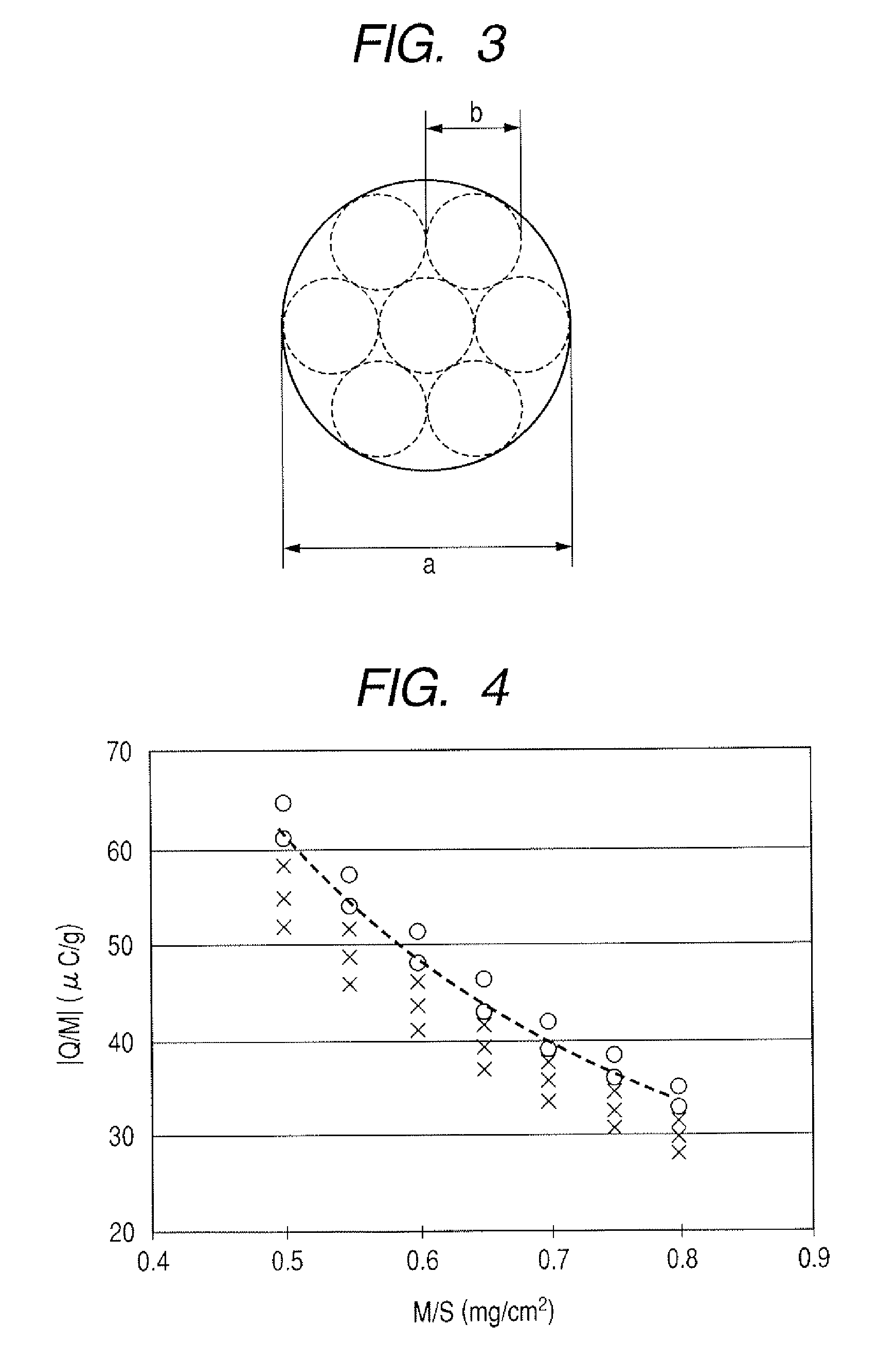Image forming apparatus
a technology of image forming apparatus and forming nip, which is applied in the direction of electrographic process apparatus, instruments, optics, etc., can solve the problems of limiting the resolution of the increase, the “blank area” of the image defect, and the limited amount of toner present in the developing nip, so as to reduce the generation of the blank area of the imag
- Summary
- Abstract
- Description
- Claims
- Application Information
AI Technical Summary
Benefits of technology
Problems solved by technology
Method used
Image
Examples
embodiment 1
[0049](1) Schematic Structural Description of Image Forming Apparatus Example
[0050]FIG. 1 is a schematic structural model view showing an image forming apparatus according to this embodiment. The image forming apparatus according to this embodiment is an electrophotographic laser printer using an amorphous silicon photosensitive member (a-Si photosensitive member) as an image bearing member. The a-Si photosensitive member is a photosensitive member of negative charge polarity. An image exposure system and a reverse developing system are employed and a resolution is 1200 dpi.
[0051]A drum-shaped a-Si photosensitive member 1 includes a photoconductive layer formed on an aluminum base 11. The photoconductive layer comprises an electron blocking layer 15, a charge generation layer 16, a hole blocking layer 17, and a surface layer as shown in FIG. 6. A thickness Ld of the photoconductive layer is 40 μm (=40×10−6 m) and a capacitance per unit area of the photoconductive layer is 2.2×10−6 (...
embodiment 2
[0190]In this embodiment, an example, in which a toner particle diameter is reduced in the structure described in Embodiment 1,will be described.
[0191]A background that the toner particle diameter is reduced is as follows. In order to output, as an electrophotography, a high-resolution image which surpasses other outputted images in a printing market, a method of reducing a laser spot diameter to obtain high resolution is employed. However, in order to more accurately visualize a high-resolution electrostatic latent image by a developing process, it is necessary that the toner particle diameter be small.
[0192]Therefore, in this embodiment, an example of an image forming apparatus whose resolution is 2400 dpi will be described.
[0193]In this embodiment, the exposure device 3 including a blue laser whose light emission wavelength is approximately 420 nm is used to obtain the resolution of 2400 dpi.
[0194]A spot diameter of 2400 dpi is approximately 10.6 μm. In order to more accurately v...
PUM
 Login to View More
Login to View More Abstract
Description
Claims
Application Information
 Login to View More
Login to View More - R&D
- Intellectual Property
- Life Sciences
- Materials
- Tech Scout
- Unparalleled Data Quality
- Higher Quality Content
- 60% Fewer Hallucinations
Browse by: Latest US Patents, China's latest patents, Technical Efficacy Thesaurus, Application Domain, Technology Topic, Popular Technical Reports.
© 2025 PatSnap. All rights reserved.Legal|Privacy policy|Modern Slavery Act Transparency Statement|Sitemap|About US| Contact US: help@patsnap.com



